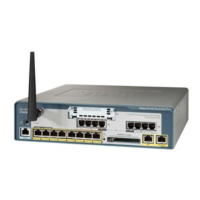APPENDIX F: Device Manager Cross Launch
Cisco Unified Communications Technical Training
Page 162 of 171
Least Cost routing
Outbound dial-peer matching is primarily based on the called-number matching the destination-pattern
as shown above. However in case the destination-pattern is EXACTLY the same, then the tie breaker
used is something known as preference that is configured under the dial-peer. The lower the preference,
the higher the priority of that dial-peer getting chosen.
In the below example, let us assume that a customer has a primary route of the SIP trunk for long
distance calls, in the event that the SIP trunk is down, they want to route calls over a backup analog line
on FXO port 0/1/0.
dial-peer voice 5001 voip
description SIP Trunk dial-peer for Long Distance
destination-pattern 91[2-9]..[2-9]……
session protocol sipv2
codec g711ulaw
session target dns:sipconnect.cisco.com
no vad
dtmf-relay rtp-nte
!
dial-peer voice 5000 pots
description Backup FXO dial-peer for Long Distance
destination-pattern 91[2-9]..[2-9]……
preference 5
port 0/1/0
!
The default preference is “0” (default CLIs will NOT show up in the config) and hence the primary
route chosen is the SIP trunk dial-peer versus the FXO dial peer.

